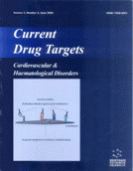Abstract
Many snake venoms contain toxins which produce profound cardiovascular effects. The site of action of these toxins includes cardiac muscle, vascular smooth muscle and the capillary vascular bed. Some snake venoms, for example, contain peptides that inhibit angiotensin converting enzyme and potentiate the biological actions of bradykinin. Other snake venoms contain structural and functional equivalents of mammalian natriuretic peptides. Sarafotoxins are short peptide toxins found in the venoms of snakes from Atractaspis spp. which display potent vasoconstriction properties. These peptides, which share a high degree of sequence identity with endothelins, recognize and bind to endothelin receptors. Snakes have also evolved toxins which block L-type Ca2+ currents (eg. calciseptine, FS2 toxins, C10S2C2 and S4C8). Snake venom proteins have also been shown to increase vascular permeability. One such protein, increasing capillary permeability protein (ICPP) has recently been isolated from the venom of Vipera lebetina. ICPP is an extremely potent permeability factor with a structure similar to vascular endothelial growth factor (VEGF). Thus there is a vast array of snake toxins with potent cardiovascular activity. Some of these proteins and peptides have proven to be highly selective tools in the study of physiological processes. Others have been used as probes of potential therapeutic targets or as lead compounds in the development of therapeutic agents. Therefore these and other related snake venom proteins hold great promise in the future understanding and treatment of cardiovascular diseases.
Keywords: bradykinin potentiating peptides, natriuretic peptides, sarafatoxin, endothelin, calciseptine, conotoxins and calcium current, vascular permeability, l-type calcium channel, cardiovascular effects
 5
5













